Insect pests of tree spices and their management
Insect pests of tree spices and their management
Cinnamon (Cinnamomum verum Bercht. et Presl)
Over 35 species of insect pests infest cinnamon in India, among which cinnamon butterfly and leaf miner are important.
Major pests
1. Cinnamon butterfly (Papilio clytia L.) (Lepidoptera: Papilionidae)
The cinnamon butterfly is the most serious pest of cinnamon in the nursery and field being widely distributed in all cinnamon growing areas in India and is more serious during the monsoon season.
Damage
- The larvae of the cinnamon butterfly feed voraciously on tend
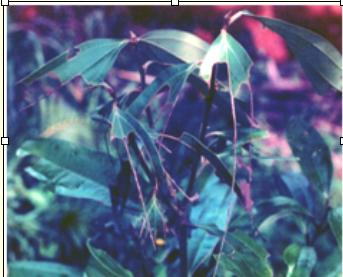 er and partly mature leaves.
er and partly mature leaves. - In case of severe infestations, the entire plant is defoliated and only the midribs of leaves with portions of veins are left on the plant.
- Young plants are often completely defoliated by the pest adversely affecting the growth of plants.
Biology
- Egg: Adults lay eggs on tender leaves and they hatch in 3–4 days.
- Larva: Newly hatched larvae are pale green with a pale yellow dorsal line and irregular white stripes. The larval stage comprising of five instars is completed in 11–17 days. Fully-grown larvae are dark brown and yellow with four rows of red spots on the sides and measure about 25 mm in length.
- Pupa: Pupae and elongated and brownish-black and the pupal period last for 11–13 days.
- Adult: Adults are large sized butterflies with a wingspan of about 90 mm and occur in two forms namely, clytia and dissimilis. The form clytia mimics Euploea sp. and has blackish brown wings with a series of arrowhead shaped white spots on the outer margins. The form dissimilis which is more common mimics Danais sp. and has black wings with elongated white spots and a series of marginal arrowhead shaped spots.
Natural enemies
Eggs of the cinnamon butterfly are parasitized by Telenomus remus Nixon (Hymenoptera: Scelionidae) in the field.
Management
Spraying quinalphos (0.05%) is recommended for the management of the cinnamom butterfly.
2. Leaf miner (Conopomorpha civica Meyr.) (Lepidoptera: Gracillaridae)
The leaf miner infests tender leaves of cinnamon plants in the nursery and field and is more serious during the monsoon season.
Damage
- The larvae of leaf miner feed on the tender tissues between the upper and lower epidermis of the leaf resulting in the formation of linear mines that end in blister-like patches
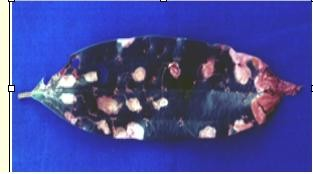 .
. - Severely infested leaves become crinkled and malformed and later the mined areas dry up leading to the formation of large irregular holes on the leaves.
Biology
- Larva: Larvae are pale creamy white and are generally seen at the centre of the mine. The larvae become pinkish red when fully grown measuring about 5 mm in length.
- Pupa: Pupation generally occurs outside the larval mines on the leaf.
- Adult: Adults are minute silvery grey moths with narrow fringed wings with a wing span of about 5 mm.
Management
Spraying quinalphos (0.05%) is recommended for the management of the leaf miner.
Minor Pests
1. Shoot and leaf webber (Sorolopha archimedias (Meyrick) (Lepidoptera: Tortricidae)
The shoot and leaf webber (Sorolopha archimedias (Meyrick) (Lepidoptera: Tortricidae) sometimes attains a status of serious pest of cinnamon in India.
Damage
The larvae of the shoot and leaf webber web tender shoots and leaves and feeds from within generally during the post-monsoon period.
Biology
- Egg: Eggs are laid on newly emerged leaves and they hatch in 3-4 days.
- Larva: Larvae are pale green and the larval period lasts for 10 days.
- Pupa: Pupation occurs in a silken cocoon within the webbed leaves. The pupal period lasts for 6-7 days.
- Adult: Adults are small grey moths with a wingspan of 15 mm and black spots on the forewings.
Natural enemies
Larvae are parasitised by Goniozus sp. (Braconidae).
Management
Spraying quinalphos (0.05%) is recommended for the management of the shoot and leaf webber.
2. Chafer beetle (Popillia complanata Newman) (Coleoptera : Scarabaeidae )
The chafer beetles are generally seen in the field during the monsoon season (July–August) in India.
Damage
Adult beetle feed on tender leaves of cinnamon
Biology
- Egg: The eggs are laid near the root zone and the incubation period lasts for 5 days.
- Larva: Newly emerged grubs are creamy white and measure 2.5 mm in length. The grubs also feed on cinnamon roots and the grub period lasts for 10 days.
- Pupa: Pupation takes place in the soil in earthen cocoons and the pupal period lasts for 15 days.
- Adult: Adults are brown beetles with a metallic green head and thorax and measure 15 x 6 mm in size.
Management
Spraying of quinalphos (0.05%) is recommended for the management of the chafer beetle.
Clove (Syzgium aromaticum (L.) Merr. et Perry)
The stem borer is the most serious pest of clove in the field and scale insects are serious pests in the nursery.
1. Stem borer (Sahyadrassus malabaricus Moore) (Lepidoptera : Hepialidae)
The stem borer is the most serious pest of clove in India and is generally seen in clove plantations grown near forest clearings. The pest has a wide host range and has been recorded on more than 40 species of woody plants and trees.
Damage
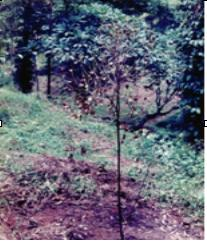 The larva of the stem borer girdles the stem of young clove trees at the basal region and bores downward into the root zone.
The larva of the stem borer girdles the stem of young clove trees at the basal region and bores downward into the root zone.- The girdled region and the bore-hole are covered with frass consisting of coarse wood particles that are formed as a mat-like structure.
- The infested trees wilt and defoliate and succumb to the pest attack subsequently.
Biology
- Egg: The eggs are laid on the weeds around the basins of clove trees.
- Larva: Early instar larvae feed on the weed plants and the later instars migrate to the clove trees and bore into the stem. The larvae are creamy white with a black head and fully grown larvae measure about 90 mm in length. The dorsal sclerites of the thoracic and abdominal segments are brown.
- Pupa: Pupation occurs within the larval tunnel.
- Adult: The adult is a large sized moth with a wing span of about 110 mm with greyish-brown mottled forewings.
Management
- The base of clove trees is to be inspected regularly for symptoms of pest infestation.
- In case the pest infestation is noticed on the stem, the mat-like frass has to be removed and quinalphos 0.1% sprayed around and injected into the bore hole.
- Swabbing the basal region of the main stem of young clove trees with carbaryl paste and keeping the basins of clove trees free of weeds are prophylactic measures for preventing the pest infestation.
2. Scale insects
A few species of scale insects infest clove seedlings in the nursery and sometimes young plants in the field. The scale insects generally seen on clove include wax scale (Ceroplastes floridensis Com.), shield scale (Pulvinaria psidii Mask.), masked scale (Mycetaspis personata Com.) (Hemiptera: Diaspididae) and soft scale (Kilifia accuminata (Sign.) (Hemiptera: Coccidae).
Damage
- Scale insects are generally seen clustered together on tender stems and lower surface of leaves.
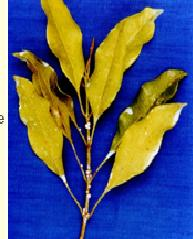
- Scale insects feed on plant sap and cause yellow spots on leaves, defoliation and wilting and drying of shoots.
Management
Spraying of dimethoate (0.05%) is recommended for the management of various species of scale insects.
Nutmeg (Myristica fragrans Houtt.)
Very few insects have been recorded on nutmeg in the field in India; however, a few species of scale insects infest seedlings in the nursery and sometimes young plants in the field.
Scale insects
Among the scale insects infesting nutmeg, the black scale (Saissetia nigra Nietn.) and white scale (Pseudaulacaspis cockerelli (Cooley) (Hemiptera: Diaspididae) are important.
Damage
- The black scale infests tender stems and leaves especially in the nursery and sometimes on young plants in the field.
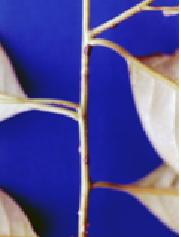
- The scales are seen clustered together and are black, oval and dome shaped. They feed on plant sap and severe infestations cause the shoots to wilt and the plants present a sickly appearance.
- The white scale is greyish white, flat and shaped like a fish scale and measures about 2.25 x 1.5 mm in size.
- The white scale occurs clustered together on the lower surface of leaves especially in nursery seedlings. The pest infestation results in yellow streaks and spots on affected leaves and in severe infestations the leaves wilt.
Management
Spraying of dimethoate (0.05%) is recommended for the management of scale insects.
Source :
C. M. Senthil Kumar, T. K. Jacob and S. DevasahayamICAR- Indian Institute of Spices Research, Kozhikode-673012, Kerala
അവസാനം പരിഷ്കരിച്ചത് : 4/1/2020
This topic provides information about use of nano ...
